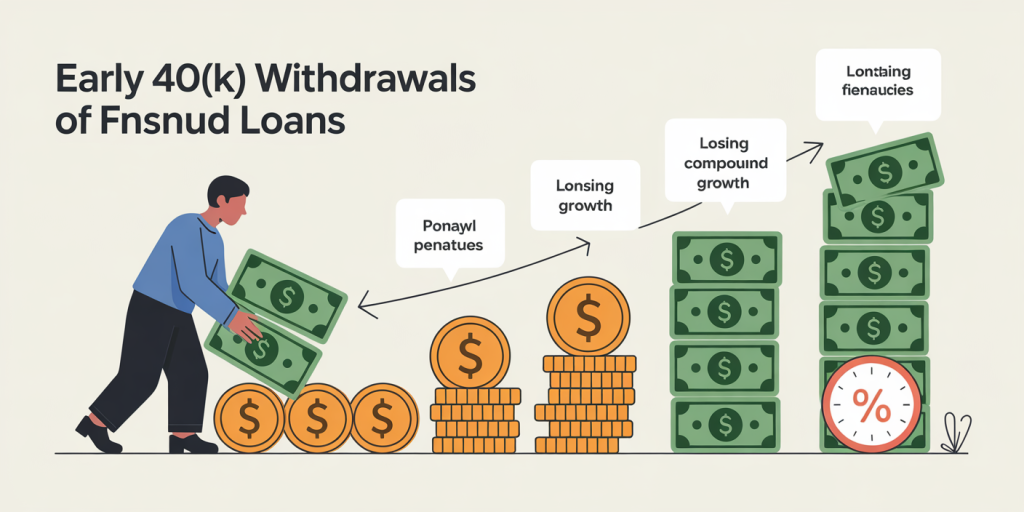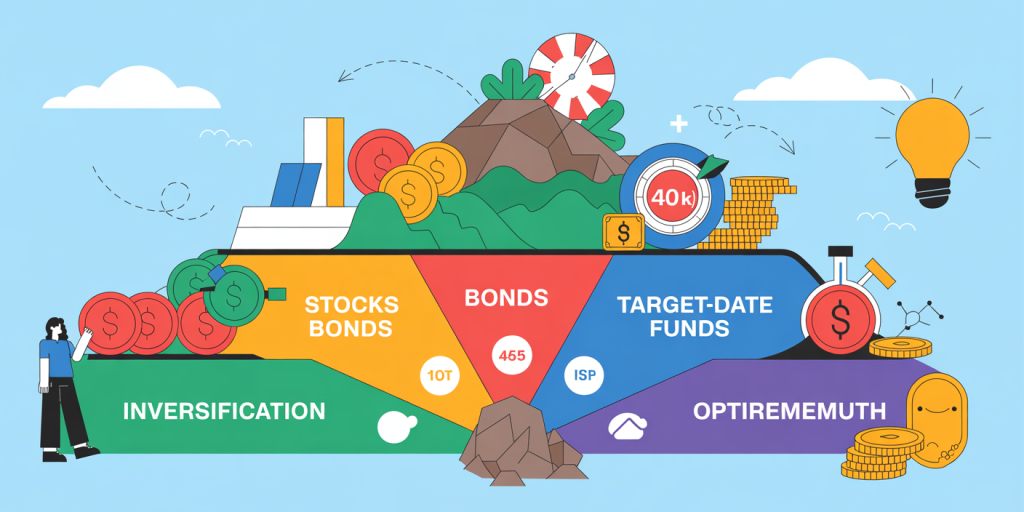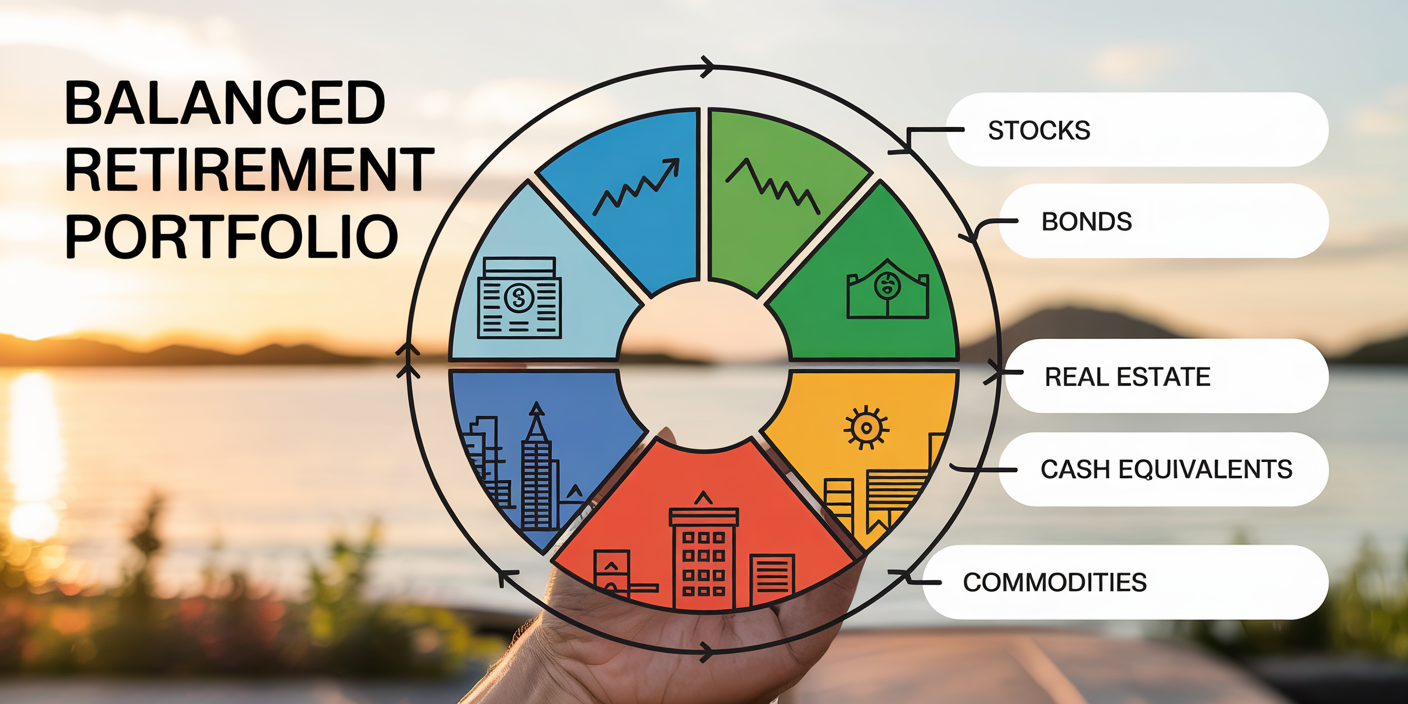401(k) Mistakes Americans Are Making and How to Avoid Them
Anúncios
Retirement planning in the United States heavily relies on employer-sponsored 401(k) plans. These tax-advantaged accounts offer a robust way for many Americans to accumulate savings over their working years. However, despite their popularity, numerous participants fall prey to common pitfalls that jeopardize their future financial security. Misunderstanding plan options, failing to contribute adequately, or making poor investment decisions can drastically reduce the growth potential of a 401(k). This article delves into the typical mistakes Americans make with their 401(k)s and provides practical advice on how to sidestep these errors.

Common 401(k) Participation Errors
Anúncios
A significant number of American workers either don’t participate in their employer’s 401(k) plan or contribute too little. According to a 2023 report by Vanguard, nearly 25% of eligible employees opt out of their 401(k) savings plan entirely. Others who do enroll often contribute less than the recommended level needed to build a substantial nest egg.
One overlooked misstep is delaying enrollment. Many employees either ignore the initial invitation to join or procrastinate until automatic enrollment policies kick in. For instance, an employer may auto-enroll workers at a 3% contribution rate, which is often insufficient to accumulate adequate retirement funds. As demonstrated by a Fidelity analysis, increasing the contribution rate from 3% to 10% could boost a 401(k) balance by nearly 60% over 30 years, assuming average investment returns.
Anúncios
The failure to maximize employer matching contributions is another widespread mistake. Many companies match employee contributions up to a specific percentage—commonly 3% to 6%. Neglecting to contribute at least enough to capture the full match is effectively leaving free money on the table. For example, if an employer offers a 50% match on contributions up to 6% of salary, and an employee contributes only 4%, they are missing out on a 1% salary equivalent benefit annually.
Over-Reliance on Early Withdrawals and Loans
Accessing 401(k) funds prematurely via withdrawals or loans may seem like a viable financial quick fix, but it often causes lasting damage. The IRS imposes a 10% penalty on early distributions taken before age 59½, not to mention that those funds miss years of compound growth.

Data from the Employee Benefit Research Institute (EBRI) reveals that approximately 20% of 401(k) holders take loans against their accounts, and nearly 10% make early withdrawals. While loans must be repaid, failure to do so results in them being treated as distributions subject to taxes and penalties.
Consider a case where a 35-year-old employee borrows $10,000 from their 401(k) to cover emergency expenses, repaying it over five years. During the repayment period, those funds are not invested, potentially foregoing tens of thousands of dollars in growth. After 30 years, that missed opportunity could translate to roughly $50,000 less in retirement savings, assuming an average 7% annual return.
Furthermore, some employees mistakenly treat 401(k) loans as part of their disposable income, borrowing repeatedly and increasing their long-term vulnerability. Minimizing such borrowing and keeping savings intact ensures better retirement readiness.
Neglecting Investment Diversification
Investment selection within a 401(k) plan profoundly influences the ultimate value of the retirement portfolio. Unfortunately, many participants make suboptimal choices by either playing too conservatively or risking too much in volatile assets without proper balance.
A common error is allocating all contributions to a single asset class, such as company stock or money market funds, exposing savers to undue risk or minimal growth. A 2022 study by Morningstar showed that nearly 15% of 401(k) participants owned 90% or more of their portfolios in either company stock or a single asset class, significantly increasing risk.
Diversification mitigates risk by spreading investments across stocks, bonds, and other asset classes, helping smooth returns over market cycles. For example, a portfolio composed of 60% stocks and 40% bonds historically provides growth potential with less volatility compared to an all-stock portfolio.
Comparative Table: Sample Portfolio Growth Over 20 Years
| Portfolio Type | Average Annual Return | Standard Deviation (Risk) | Ending Balance* |
|---|---|---|---|
| 100% Stocks | 8.0% | 15.0% | $466,100 |
| 60/40 Stocks & Bonds | 7.0% | 9.0% | $386,970 |
| 100% Bonds | 4.0% | 5.0% | $219,110 |
*Assumes $10,000 initial investment with $6,000 yearly contributions.
Prudent investors take advantage of target-date funds, index funds, and other diversified investment options offered within 401(k) plans. These choices adjust risk exposure as retirement nears, providing a systematic approach to balancing growth and preservation.

Ignoring Fees and Expenses
Hidden or underestimated fees in 401(k) investments severely erode returns over time. Many participants are unaware of expense ratios, administrative fees, or sales charges associated with funds within their plans.
A 2021 analysis from the Investment Company Institute found the average expense ratio for 401(k) funds to be around 0.40%. While seemingly minor, small differences in fees compound over decades, greatly affecting ending balances. For example, paying 0.50% annually instead of 0.20% on a $100,000 balance results in losing approximately $16,000 in potential savings over 25 years, assuming 7% returns.
Administrative fees, including recordkeeping and plan management costs, can add additional drag on savings. Some plans also include funds with front-end sales charges or back-end loads that diminish capital invested.
To avoid excessive fees, participants should carefully review plan disclosures and opt for low-cost index funds or ETFs when available. Switching from actively managed funds charging higher fees to passively managed ones can be a simple strategy to boost net returns.
Not Adjusting Contributions Over Time
Inflation, salary increases, and changing financial goals necessitate periodic adjustments in 401(k) contributions. However, many savers maintain the same contribution percentage for years, often falling short of retirement targets.
For example, a worker who contributes 5% annually to their plan for a decade without raising the amount may still accumulate less than half the needed nest egg, especially if inflation increases living costs or salary growth permits higher savings.
Automatic escalation features offered by many plans can help combat this inertia by gradually increasing contribution rates, generally by 1-2% annually. Participants who proactively review and adjust their contributions as income grows or circumstances change position themselves for stronger retirement security.
Research by the Transamerica Center for Retirement Studies indicates that savers who increase contributions incrementally are twice as likely to feel confident about retirement compared to those who do not.
Future Perspectives on 401(k) Planning
As the retirement landscape evolves, so will the ways Americans manage their 401(k)s. Innovations like personalized digital advice, AI-driven portfolio management, and improved financial literacy tools promise to help participants make more informed decisions.
Moreover, legislative changes, such as potential increases in contribution limits or the introduction of universal automatic enrollment policies, may further enhance retirement outcomes nationwide. The U.S. Department of Labor continues to push for greater transparency and reduced fees, making 401(k) plans more accessible and efficient.
Moving forward, embracing technology and education will be paramount. Employees should leverage employer resources, financial advisors, and independent tools to optimize their 401(k) strategies. Avoiding costly mistakes, such as those outlined in this article, combined with a disciplined, forward-looking approach, will empower Americans to build resilient retirement portfolios capable of sustaining their financial needs in the golden years.



Post Comment